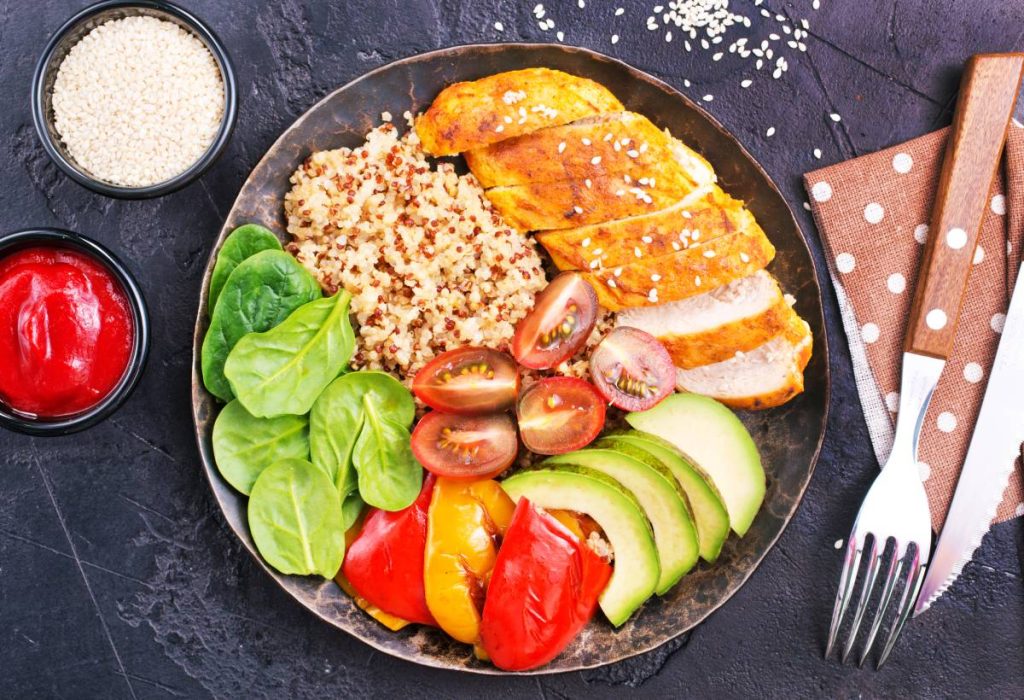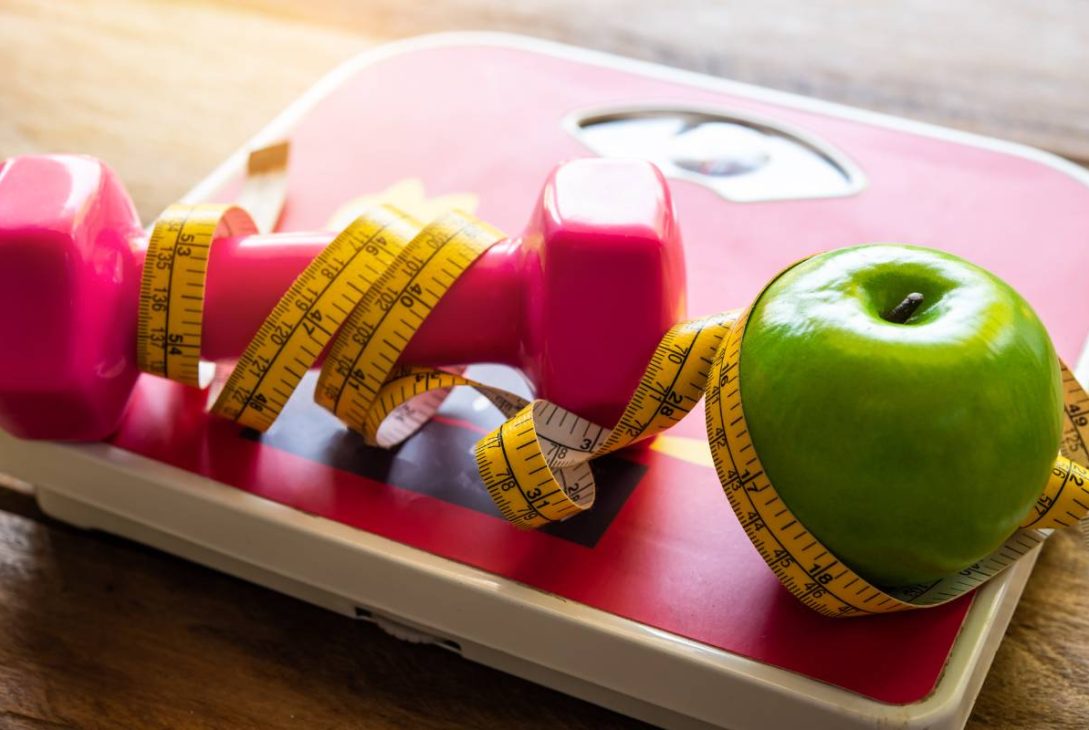When you’re trying to lose weight, it can be overwhelming to sift through all the advice and trendy diets out there. But the truth is, the three most important things are eating well, moving regularly, and having a positive mindset.
In this article, we’re going to dive into why these three pillars are so important and how they work together to help you reach your goals.
We’ll give you practical tips and tricks to help you along the way, from understanding how to balance your meals to getting your head in the game. So let’s get started on your journey to a happier, healthier you!

1. Balance your meals
When it comes to losing weight, what you eat matters the most. You’ve probably heard this countless times, and it’s true. But sticking to a diet plan can be tough, especially with all the trendy diets out there. Instead of hopping on the latest fad, I found success by focusing on balanced meals.
So, what exactly does that mean? Balanced meals include a mix of carbohydrates, protein, and healthy fats. Let’s break it down.
Carbohydrates are our body’s main source of energy, but not all carbs are created equal. Aim for complex carbs, like whole grains, fruits, and vegetables. Check the glycemic index (GI) of your carbs — shoot for ones with a GI below 55, as these won’t spike your blood sugar as much.
Next up, protein. Think of lean sources like chicken, fish, tofu, or legumes. Protein helps you feel full and satisfied, which can prevent overeating.
Last but not least, healthy fats. Yes, fats can be good for you! Nuts, seeds, avocados, and olive oil are all great choices. These fats are important for brain health and keeping your heart happy.
Now, onto the “what not to do” list. Avoid these common pitfalls, and you’ll be on the right track.
First off, steer clear of simple carbs with a high glycemic index. This includes things like sugary snacks, white bread, and pastries. Save these treats for special occasions and limit them to no more than one day a week.
Processed meats and ready-made meals are convenient but not great for your waistline. They’re often packed with unhealthy additives and preservatives. Stick to fresh, whole foods whenever possible.
Watch out for trans fat! It’s usually found in fried foods, takeout meals, and pastries and can really mess up your cholesterol and increase the risk of heart disease. If you can, try going for baked or grilled options instead.
Keep it simple and balanced when it comes to your meals. You don’t have to deprive yourself to achieve your weight loss goals. Just make sure you’re making healthy choices that make you feel good in the long run.

2. You need to move it, move it, move it!
Movement is key to both physical and mental well-being, and it doesn’t have to be daunting or complicated. Let’s break it down into two parts: everyday activities and scheduled exercise.
First, let’s talk about the activities you do every day. These might not feel like “exercise,” but they still make a big difference. Whether you’re sweeping the floor, playing with your kids, or taking a stroll with your partner, every movement counts. Even small tasks like taking the stairs instead of the elevator or parking a bit further away can add up to a more active lifestyle. Plus, staying active in your daily life helps you maintain your independence as you age.
Now, onto scheduled exercise. Aim for at least 30 minutes of dedicated exercise each day, split into different types throughout the week.
Cardiovascular exercise gets your heart pumping and your blood flowing. Try activities like running, biking, rowing, or even just dancing around your living room. The goal is to raise your heart rate and keep it up for a while.
Interval training is another great option, especially if you’re short on time. This involves alternating between bursts of high-intensity activity and periods of rest or lower intensity. It’s super effective for burning fat and improving cardiovascular health.
Finally, don’t forget about strength training. This doesn’t mean you have to become a bodybuilder overnight. Just focus on lifting weights or doing bodyweight exercises a few times a week. Not only does strength training boost your metabolism, but it also helps you build muscle and maintain a healthy body composition.
To be healthier and happier, it’s important to do both everyday activities and scheduled exercise. Find what works for you and stick with it. You can dance in your living room or hit the gym, just keep moving and enjoy the benefits of being active.

3. Control your mind
When it comes to losing weight, it’s not just about what you eat and how much you move; your mindset plays a crucial role too. Let’s dive into the mental game of weight loss and explore some strategies to keep your mind on track.
Stress Reduction: Stress and weight gain are like two peas in a pod. When you’re stressed out, your body pumps out hormones like cortisol, which can make you crave junk food and even affect where you store fat. To tackle this, it’s important to find ways to chill out and reduce stress in your life. You could take an hour to unwind every day, try relaxation techniques like deep breathing or meditation, or make physical activity a priority to blow off steam.
Talk Yourself Into It: Motivation is like a flame—it can burn bright at first, but it can be burnt out over time. That’s where self-talk comes in. We all have internal dialogues running through our minds, whether we realize it or not. The key is to harness that self-talk and use it to your advantage. Instead of allowing negative thoughts or excuses to creep in, focus on talking yourself into making healthy choices. Remind yourself of your goals, visualize your success, and reinforce positive behaviours.
Set Realistic Goals: Another important aspect of the mental game is setting realistic goals. While it’s great to aim high, setting unattainable goals can set you up for disappointment and frustration. Instead, break your long-term goal into smaller, more manageable milestones. Celebrate your progress along the way, and don’t be too hard on yourself if you hit a plateau or encounter setbacks. Remember, slow and steady progress is still progress, and every step forward is a step closer to your ultimate goal.
Practice Self-Compassion: Finally, don’t forget to be kind to yourself throughout your weight loss journey. Change takes time, and it’s normal to experience ups and downs along the way. Instead of beating yourself up over slip-ups or setbacks, practice self-compassion and treat yourself with the same kindness and understanding you would offer to a friend. Remember, you’re doing the best you can, and every healthy choice you make is a step in the right direction.
Final thought
Getting and keeping a healthy weight is a journey that takes time, effort, and a well-rounded approach. You can start by eating balanced meals, moving regularly, and having a positive attitude. Remember, there’s no one-size-fits-all solution, and it’s totally fine to make mistakes along the way. What’s important is sticking to your goals, making changes that last, and enjoying the ride towards a healthier and happier life. So, whether you’re just starting out or keeping up with your progress, keep these pillars in mind and trust in yourself to reach your goals.


















